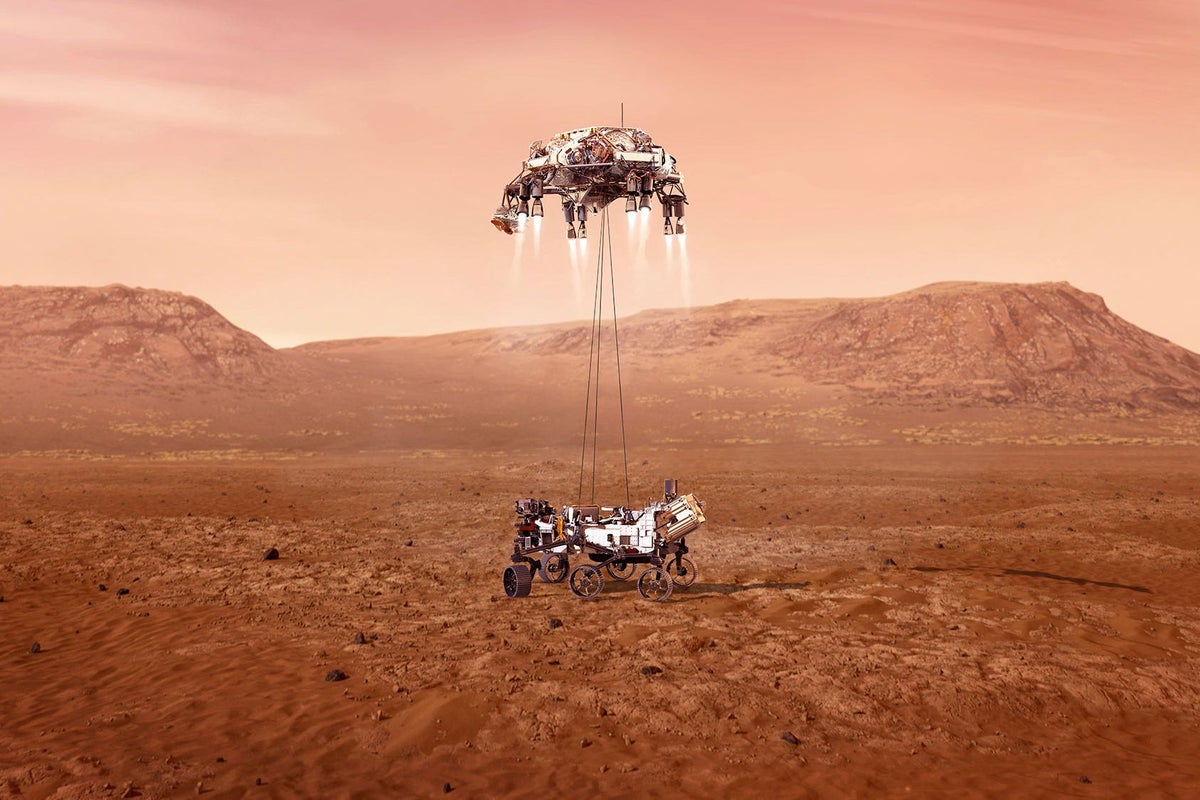
Diverse types of organic molecules have been found on Mars by a Nasa rover.
The material was detected by the Perseverance rover in the Jezero Crater on Mars, scientists said.
Researchers are unable to rule out that the materials have a “biotic” origin, or are the result of life on the planet. But they might also be formed in other ways, such as interactions between water and dust or having been dropped onto the planet by dust or meteors.
The findings suggest that Mars may have had a far more active past than we realised – and could have significant implications for the search for alien life.
According to the study, understanding more about Martian organic matter could shed light on the availability of carbon sources, with implications for the search for potential signs of life.
The Scanning Habitable Environments with Raman and Luminescence for Organics and Chemicals (Sherloc) instrument on the rover is the first tool to enable fine-scale mapping and analysis of organic molecules and minerals on Mars.
Perseverance landed within the Jezero crater, the site of an ancient lake basin with high potential for past habitability, in February 2021.
Since then scientists have been exploring the geological make-up of the crater floor using a suite of tools on board the rover that can take pictures of and analyse the rocks.
Sunanda Sharma, Ryan Roppel and their colleagues analysed observations from two formations on the Jezero crater floor.
Signals of organic molecules were detected on all 10 targets that Sherloc observed in the Jezero crater floor, concentrated in the Maaz formation, more than in the Seitah formation.
The data showed diverse mineral association and spatial distribution that may be unique to each formation.
Even if the material is not actually biological in origin, it could give us important clues about whether Mars was able to host alien life, scientists said.
“Not all organics are biological in origin. Observing spatial relationships between minerals and organics is necessary when evaluating organic origins and potential biosignatures. Everything we know of life on Earth is limited to what is preserved in the rock-mineral record. On Earth, biosignatures are found in certain minerals and some minerals are better at preserving organics than others,” said Ashley E Murphy, a researcher at the Planetary Science Institute and co-author on the new paper.
“Mars may have had a similar early geologic history to Earth so we use our knowledge of life as we know it on Earth for where to look for potential evidence of past life on Mars. Mapping organics allows for a better understanding of if the Martian carbon cycle is similar to or different from Earth, and the potential of Mars to host life.”
The researchers suggest the diversity among these observations may provide insight into different ways that organic matter may have originated: potentially through deposition by water, or in combination with volcanic materials.
Writing in the Nature journal, the authors said: “Our findings suggest there may be a diversity of aromatic molecules prevalent on the Martian surface, and these materials persist despite exposure to surface conditions.
“These potential organic molecules are largely found within minerals linked to aqueous processes, indicating that these processes may have had a key role in organic synthesis, transport or preservation.”
The findings are published in a new article, ‘Diverse organic-mineral associations in Jezero crater, Mars’, in Nature today.
Additional reporting by Press Association







